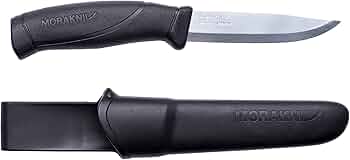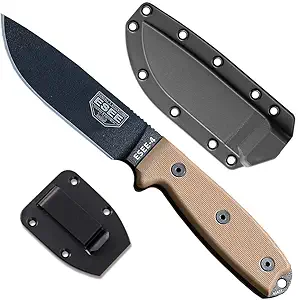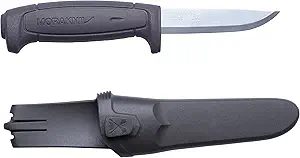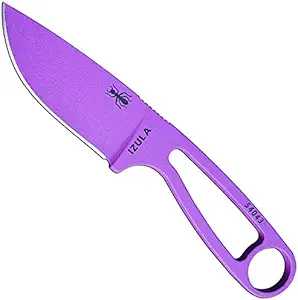The Ultimate Buying Guide for Fixed Blade Knives: Types, Key Considerations, Features, Prices, Tips, and FAQs
Overview
A fixed blade knife is an essential tool for outdoor enthusiasts, hunters, and survivalists. It is a reliable and sturdy tool that can be used for a variety of tasks, including hunting, camping, and self-defense. However, with so many options available in the market, it can be challenging to choose the right one. In this buying guide, we will discuss the different types of fixed blade knives, key considerations, features, prices, tips, and FAQs to help you make an informed decision.
Types
1. Hunting Knife: These knives are designed for hunting and skinning game. They typically have a drop point or clip point blade, which is ideal for piercing and slicing. Hunting knives can have a full tang or partial tang, and the blade can be made of stainless steel or high-carbon steel.
2. Survival Knife: As the name suggests, survival knives are designed for survival situations. They are typically larger and heavier than hunting knives and have a thick and durable blade. Survival knives can have a serrated edge, which is ideal for cutting through tough materials such as rope or wood.
3. Tactical Knife: Tactical knives are designed for military and law enforcement personnel. They are typically lightweight and have a durable blade that can be used for self-defense or combat situations. Tactical knives can have a tanto or drop point blade, and the blade can be made of stainless steel or high-carbon steel.
Key Considerations
1. Blade Material: The blade material is an essential consideration when choosing a fixed blade knife. Stainless steel is a popular choice because it is durable and resistant to rust and corrosion. High-carbon steel is another option, which is ideal for hunting and survival knives because it is strong and holds an edge well.
2. Handle Material: The handle material is also an essential consideration. Common materials include wood, rubber, and synthetic materials. The handle should provide a comfortable and secure grip, even when wet or slippery.
3. Blade Length and Thickness: The blade length and thickness are important considerations, depending on the intended use of the knife. A longer blade is ideal for hunting and survival situations, while a shorter blade is ideal for everyday carry. The blade thickness should be proportional to the blade length and should be thick enough to handle heavy-duty tasks.
Features
1. Full Tang: A full tang knife has a blade that extends through the handle, providing additional strength and durability.
2. Partial Tang: A partial tang knife has a blade that only extends partially into the handle, making it lighter and more comfortable to carry.
3. Blade Shape: The blade shape can vary depending on the intended use of the knife. Common shapes include drop point, clip point, and tanto.
4. Point Type: The point type can also vary depending on the intended use of the knife. Common point types include spear point, drop point, and clip point.
5. Serrations: Serrations are small teeth on the blade that are ideal for cutting through tough materials such as rope or wood.
6. Sheath Material: The sheath material should be durable and provide a secure fit for the knife. Common materials include leather, nylon, and kydex.
Prices
Fixed blade knives can range in price from under $20 to over $500, depending on the brand, materials, and features. A high-quality fixed blade knife can cost between $100 and $200.
Tips
1. Choose a knife that is comfortable to hold and easy to use.
2. Consider the intended use of the knife and choose one that is suitable for the task.
3. Look for a knife with a durable blade and handle material.
4. Choose a knife with a sheath that provides a secure fit and easy access to the knife.
FAQs
Q: What is a fixed blade knife?
A: A fixed blade knife is a knife with a blade that does not fold or retract into the handle.
Q: What is the best blade material for a fixed blade knife?
A: Stainless steel and high-carbon steel are both popular choices for fixed blade knives.
Q: What is the best handle material for a fixed blade knife?
A: The best handle material for a fixed blade knife is one that provides a comfortable and secure grip, even when wet or slippery.
Q: Can I sharpen a fixed blade knife myself?
A: Yes, you can sharpen a fixed blade knife yourself using a sharpening stone or other sharpening tools.
Q: How do I care for my fixed blade knife?
A: To care for your fixed blade knife, keep it clean and dry, and oil the blade and handle regularly to prevent rust and corrosion.
Conclusion:
Choosing the right fixed blade knife can be challenging, but with the right knowledge and information, you can make an informed decision. Consider the intended use of the knife, the blade and handle material, and the features and prices to choose the best fixed blade knife for your needs.













